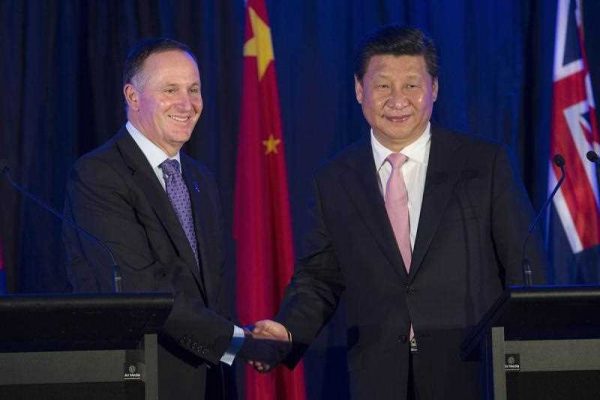The single most important source of New Zealand’s growth was Chinese demand, especially for dairy products. Complex infant formula, rather than commodity butter or bulk cheese, was increasingly demanded by Chinese consumers. It is no longer sensible to think dairy products are produced by farmers alone; many forms of expertise are required.
New Zealand’s history of dependence on specific export products and export markets sometimes evokes worries about a lack of diversification. But diversification insures against risks that are independent of one another, while Chinese demand is now so important that there are few markets which would not respond to any difficulties it experienced. New Zealand policy is appropriately focused on exploiting market demand wherever it exists. Accessibility, rather than diversification, is the appropriate policy objective. International economic diplomacy has had this focus for 30 years.
Hysteria is not an alternative to policy analysis. Commentaries on the New Zealand economy tend to swing excessively between enthusiasm for faster growth, expressed in phrases like ‘rock-star economy’, and pessimism engendered by falls in dairy prices towards the end of the year.
Continuity in New Zealand’s international orientation was matched by continuity in internal domestic events. The three-yearly general election returned the incumbent government and strengthened, rather than weakened, its position. The electorate ignored a sensationalist media, more intent on creating news than reporting significant events. The defeated Labour Party elected a new leader, Andrew Little, who surprised many observers with an unexpectedly strong start that focused on looking at some current trends in work and contemporary social structures rather than perpetuating slogans and issues from past years. Little’s position meant that there was a reasonable political debate about security issues rather than another bout of point-scoring.
The year also saw the progressive release of results from the 2013 census, delayed from 2011 by the earthquakes in Christchurch. The two most obvious trends evident in the census results were increased diversity and ageing of the New Zealand population.
Sources of immigration to New Zealand in recent years have been varied. There was a notable shift in the importance of Asian countries, especially China, India and the Philippines. Immigrants settle disproportionately in Auckland, which is becoming a highly cosmopolitan city.
Intermarriage among ethnic groups is common and an increasing fraction of the population records more than one ethnic identity. Comparison across censuses shows that people change their identities as their circumstances and lifestyles change. While parents from different ethnic groups tend to identify their children with all relevant ethnicities, choices are made over time. Yet there is a trend towards more New Zealanders having multiple ethnic identities.
Ethnic diversity is now the most striking characteristic of the New Zealand population. But diversity can be found in many dimensions. Most of the population is urban rather than rural. But while increasingly concentrated in Auckland, well over half of the population lives in other smaller urban centres.
Internal migration has decelerated, but the New Zealand population is mobile. About one-in-six Maori live in Australia. And there is a large diaspora of New Zealanders to be found around the world. Migration is no longer a matter of settlers choosing to move to New Zealand, but is part of a worldwide pattern of temporary location in another country. New Zealand is a country of numerous multiple identities. The image of a small village making important decisions by consensus, still much appealed to in popular discourse, is far from appropriate.
Ageing is another broad international trend shared by New Zealand’s population. People are living longer but, more importantly, a lower birth-rate has meant that young people are becoming relatively scarce. New Zealand is somewhere towards the middle of international experience, well behind Europe, Japan and China, but ahead of Africa and Latin America. Furthermore, while the fertility of Maori and Pacific populations is dropping back towards the national average, the former still exceeds the latter.
The interaction of diversity and ageing is important also in regional variation. Population growth in Auckland and a few other urban centres appears to result especially from international migration. But many smaller rural areas face declining populations and will have to manage declining ability to provide social services. Management of change at various levels will continue to be the major challenge for many New Zealanders in the next 30 years.
Gary Hawke is an Associate Senior Fellow at the New Zealand Institute of Economic Research, and a member of the Academic Advisory Council of the Economic Research Institute for ASEAN and East Asia.
This article is part of an EAF special feature series on 2014 in review and the year ahead.

